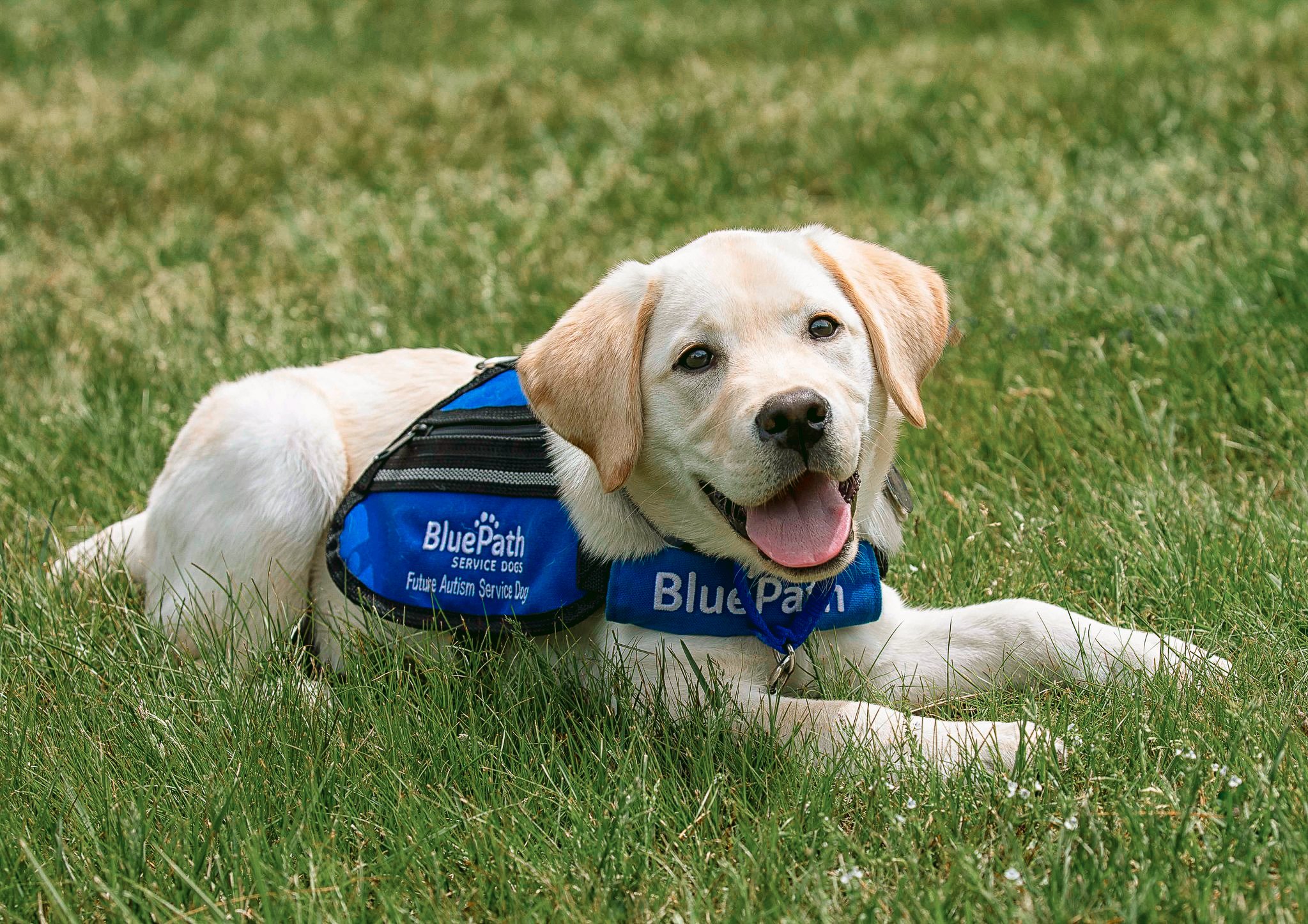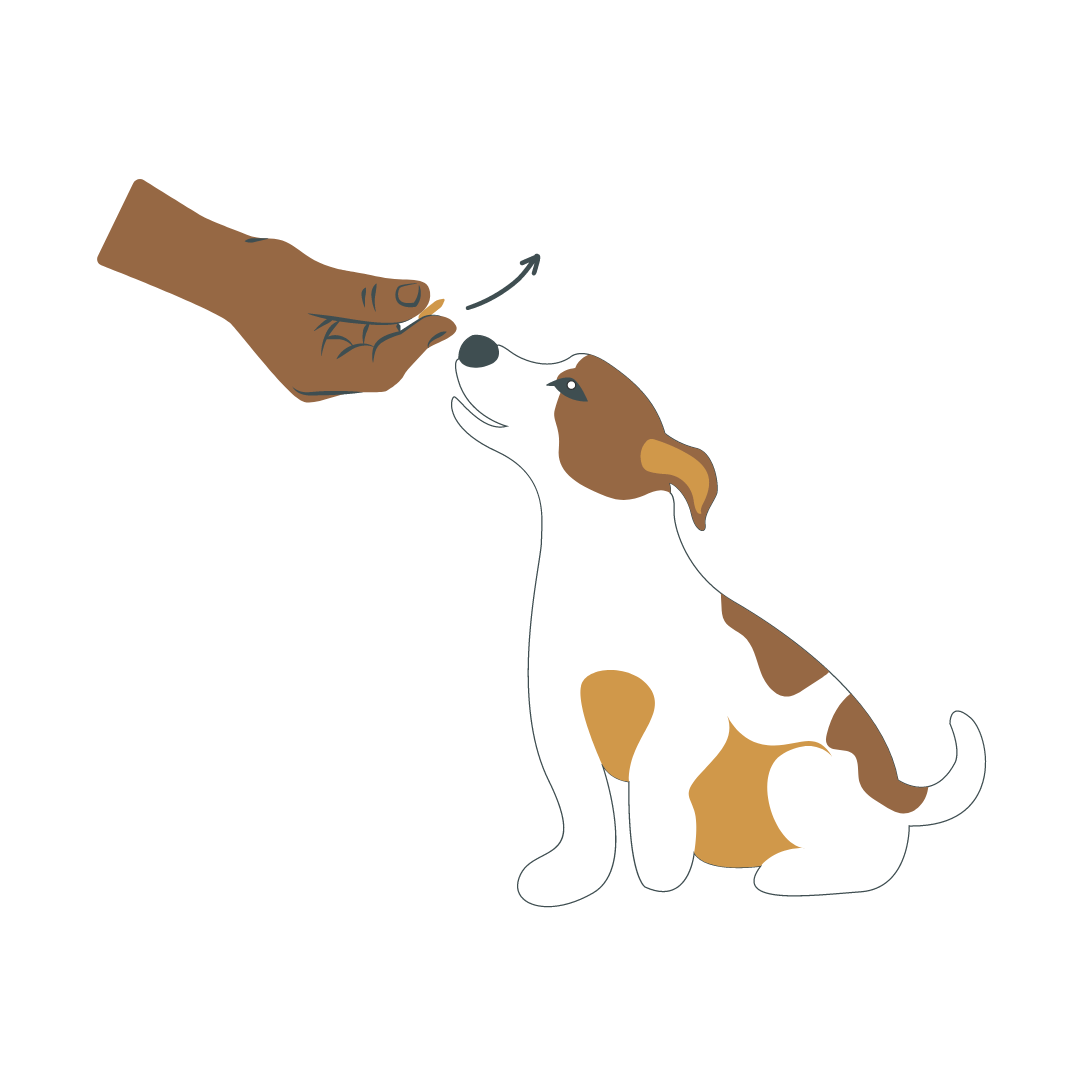
WHAT YOU WILL NEED
NOTE: All products have affiliate links, so I earn a small commission on each purchase. Happy training!
PHASE 1: TEACH THE BEHAVIOR
Begin with your puppy sitting. (If they don't know "sit" yet, refer to the session on teaching “sit.”) If your puppy’s rear end pops up at any point, remove the treat, cue "sit," and start again.
Lure into position
Place the treat directly on your sitting puppy’s nose. Slowly guide the treat down toward the floor, aiming between their front paws.
Reward progress
Reward your puppy for just lowering their head. Click and treat when they make any downward movement.
Continue practicing
Keep rewarding small steps toward lying down until they are fully laying down. Practice over several sessions.
TIPS FOR PROBLEM SOLVING
Move Slowly
Move your hand deliberately. If you go too fast, your puppy might lose interest. Keep the treat in contact with their nose as you guide it downward. This keeps their focus on you.
Keep the treat close
Puppy standing up while practicing? Aim your treat between their feet. Moving the treat too far away from their body will cause them to stand up to follow it, which you want to avoid.
PHASE 2: SOLIDIFY THE HAND CUE
Step 1: Start Close and Low
Sit down with your puppy and guide them into a “down” by holding the treat between your palm and thumb, with your palm facing down. Bring your hand all the way to the ground. Click and treat when they lie down. Repeat until they’ve got it.
Step 2: Stand Up, Don’t Give Up
Once they’re comfortable with the hand cue, stand up. Begin your “down” cue from your navel and move your hand downwards. Your new position of standing up might confuse them at first, so be patient and keep practicing!
Step 3: Give Them Some Space
Gradually increase the distance between your hand and their nose, making them follow the cue without checking for treats. Keep rewarding, but no more hand-to-nose treat delivery.
Step 4: Lose the Treat, Keep the Magic
Time to go hands-free! Use the same hand motion, but no treat in hand. Reward with a click and treat after they lie down. Slowly start standing taller, raising your hand less each time. Soon, you’ll be cueing “down” from full height—no back bending required!
Take it step-by-step, and before you know it, you’ll have a “down” that’s as easy as waving hello!
OVERVIEW
PHASE 2: SOLIDIFY THE HAND CUE
My end goal is to be able to stand upright and cue “down” by just motioning my hand toward the floor, palm down, without having to bend over. This will take time and multiple sessions.
Start by sitting and cueing the behavior as you have been, but now hold the treat between your palm and thumb, with your palm facing down. Cue your puppy into the down position, click, and treat. Keep practicing until your puppy is comfortable with the new hand cue.
Next, stand up. This new position will look different to your dog. Start the cue at your navel and move your hand downward to the ground. Practice this for several repetitions.
Now, start increasing the distance between your hand and your dog’s nose until you can cue the behavior without them feeling the need to check if you’re holding a treat. If they keep checking, you won’t be able to cue the behavior without a treat successfully.
Once they have mastered that, it’s time to start practicing the cue without food in your hand. If your dog is used to not inspecting your hand, this should go smoothly. As soon as they complete the “down,” click and treat. Do this for several repetitions.
Next, work on standing more upright. Gradually increase the distance between your hand and the ground until you’re fully upright. Don’t rush—make sure your dog is responding consistently at each new height before moving on. The toughest part is often when your hand stops at the height of their nose. Once you get past that, it usually gets easier, but if your dog gets confused, go back to the last successful point and slowly progress from there. Eventually, you’ll be able to cue “down” while standing tall without bending over.
PHASE 3: TEACH THE VERBAL CUE
We teach the hand cue first because body language is your dog’s native tongue. Once the hand cue is solid, introduce the verbal cue. Say “down,” then immediately give the hand cue. When your puppy lies down, click and treat.
Repeat this pattern—verbal cue followed by hand cue—for several sessions. Eventually, your dog will start to anticipate the hand cue after hearing “down” and will lie down before you even move. This is how they learn to respond to the verbal cue alone. It’ll take time for them to consistently respond to just the word, so be patient. Anytime they lie down just from the verbal cue, click and treat.
If you say “down” and your puppy doesn’t respond, don’t repeat yourself—just follow up with the hand cue. People love to repeat verbal cues, but your dog will listen better if you give the cue once and then back it up with the hand signal if needed.
If your dog has been reliably responding to the verbal cue but suddenly becomes less responsive, you can choose to offer praise or pets instead of a click and treat. Which brings us to…
PHASE 4: SELECTIVE REINFORCEMENT
Once your puppy is consistently responding quickly to both your hand signal and verbal cue, start being a little more selective about when you offer treats. Reward the best responses and let the slower ones slide. Over time, you can be more selective as your dog won’t need treats for every little success.









